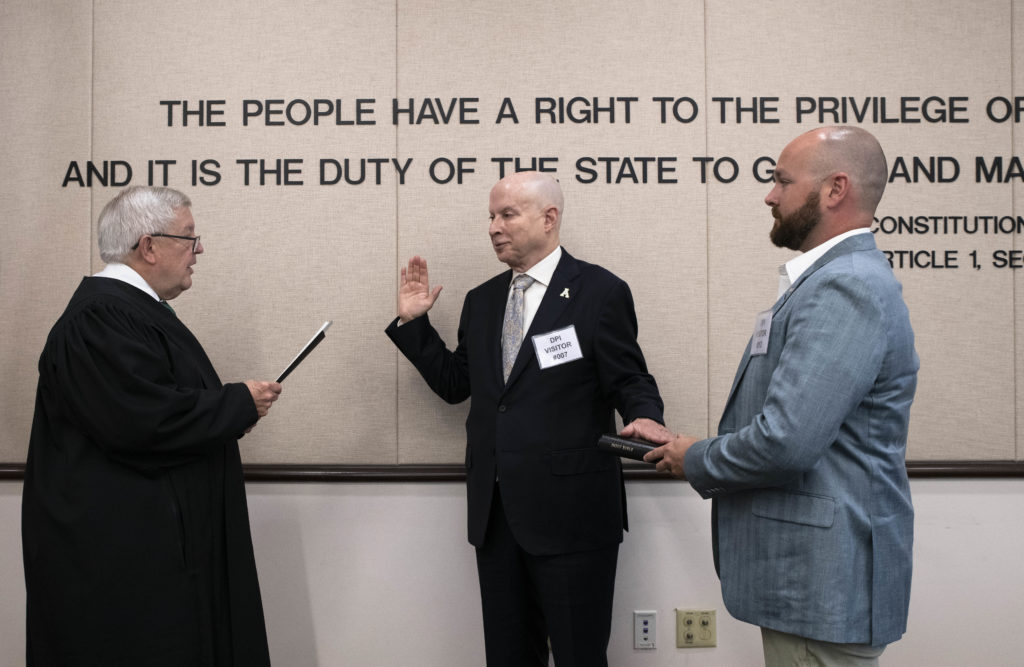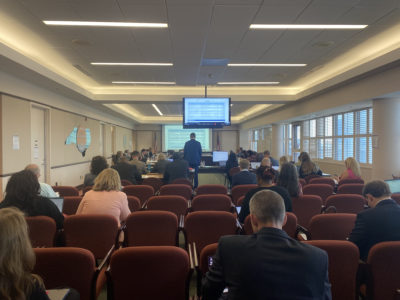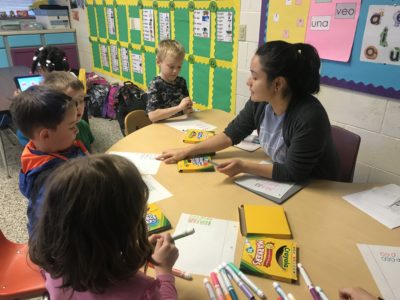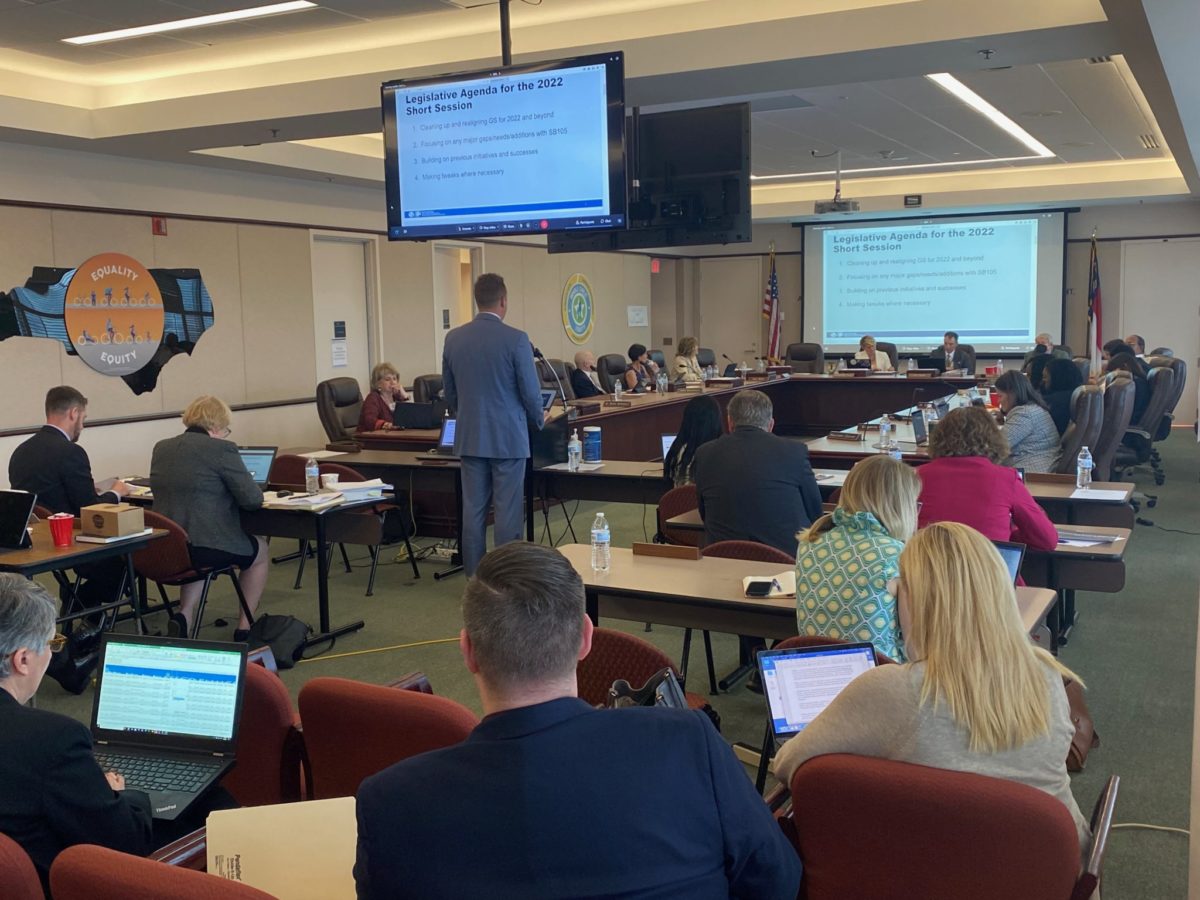
|
|
For the most part, the State Board of Education and Superintendent of Public Instruction Catherine Truitt are on the same page when it comes to budget priorities for the upcoming legislative short session.
You can see below joint budget priorities for the Department of Public Instruction (DPI) and the Board.
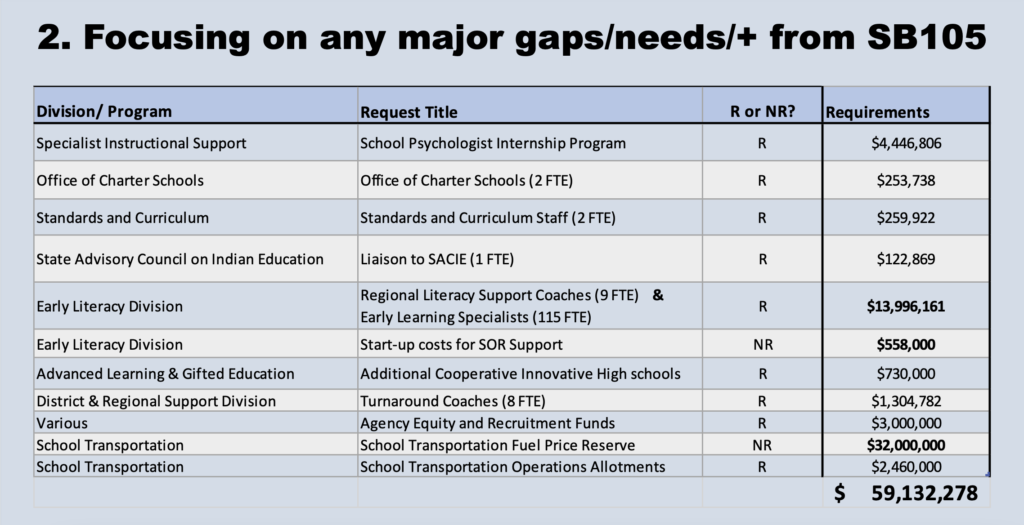
The two are also aligned when it comes to advocating for a salary increase for educators, as well as dealing with rising fuel costs. Jamey Falkenbury, director of legislative affairs for DPI, said that every 10 cent increase in gas equates to an extra $2 million increased cost to the state.
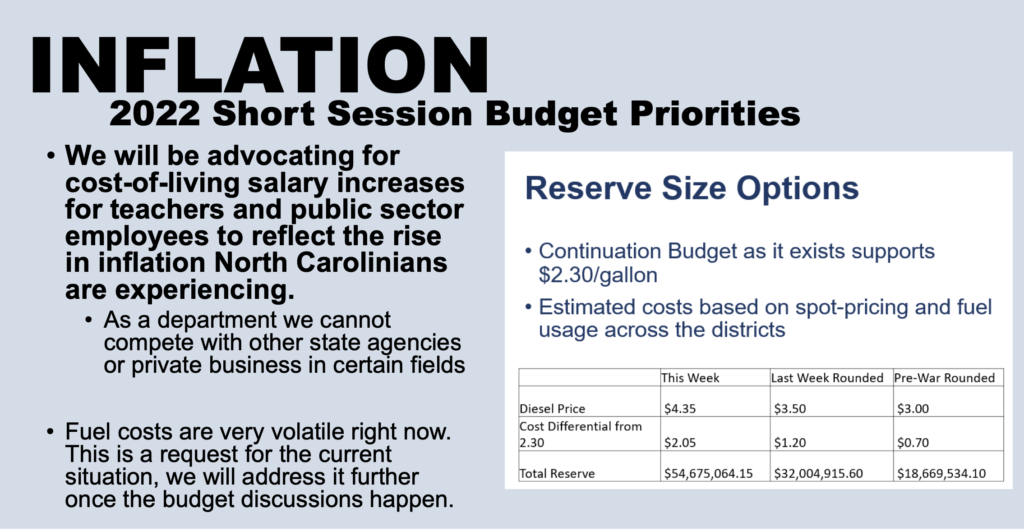
But in two areas, the Board and Truitt differ.
The Board is advocating for $15 million to fund 115 social workers for school districts around the state.
In addition, the Board is going to ask lawmakers for $18 million for 51 positions for DPI’s efforts in turning around low-performing schools. Their goal is to help DPI expand its efforts to support low-performing schools in the state. You can see these line items in the charts below.
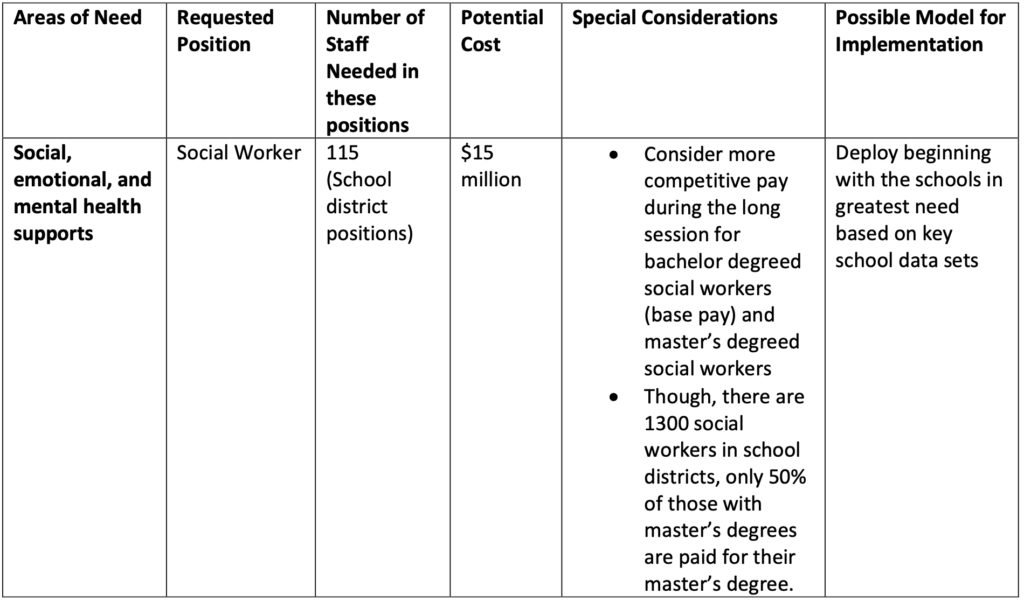
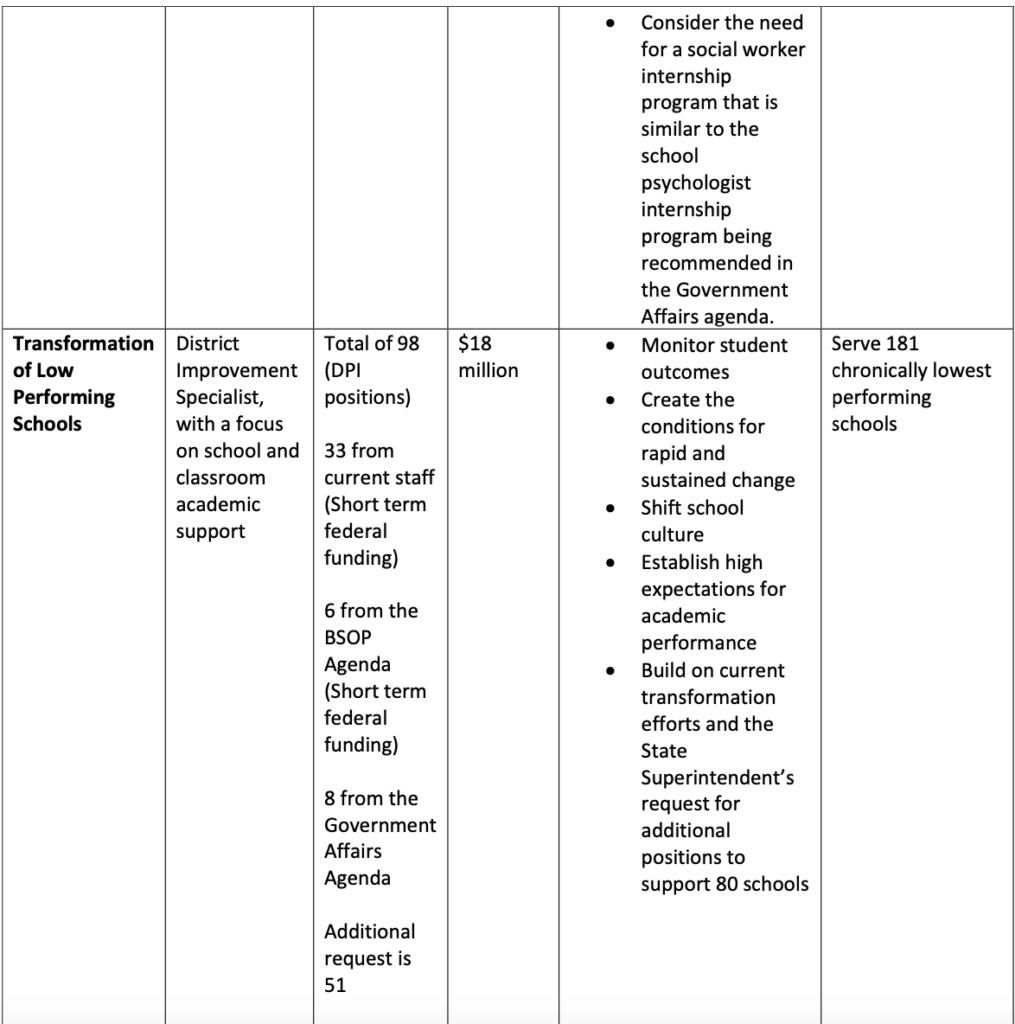
While Truitt didn’t disagree with the need for social workers or additional school transformation staff, she did question the timing of the ask. She pointed out that districts have federal COVID-19 dollars that they can use to hire social workers if they want, and she thought it would be a bad move to ask legislators for district social workers when so much money was already floating around.
“We need to be willing to spend every single dime that we have right now,” Truitt said.
She also noted that the state didn’t even have a firm grasp on the need for social workers, pointing out that while some districts had none, others were better equipped.
Board Vice Chair Alan Duncan said that the recommended ratio of social workers in schools was one for every 250 students, a ratio that North Carolina doesn’t come close to.
Truitt replied that nobody does.
“But we’re at five times that. We’re at one out of every roughly 1,300 to 1,400 students,” Duncan said, adding: “We do know there is a significant need for social workers.”
Board Chair Eric Davis said that while he understood Truitt’s arguments, if the Board didn’t advocate for these social worker positions now, it would be another year before lawmakers would have a chance to take action on the subject.
“If we don’t act now in the short session, we’re not just putting it off for a couple of months,” he said.
Additionally, Truitt said she wasn’t sure that DPI was even ready now to take on additional staff and expand its efforts fully to all 181 low-performing schools in the state. She wanted to delay that request until next year’s long session.
“It gives me great trepidation to think that we’re going to jump from supporting 81 schools to 181 schools when we don’t know if we have what we need to support the 81 schools,” Truitt said.
When talking about the joint request for nine regional literacy support coaches and 115 early learning specialists earlier in the meeting, Falkenbury said this would expand turnaround support to allow DPI to have at least some impact on all 181 low-performing schools.
Truitt talked about this being a stopgap measure while DPI gears up to request more support funding in the long session.
Indigenous education
The Board heard a report on Indigenous education in North Carolina, including metrics on how Indigenous students fared compared to their peers when it comes to achievement, graduation rates, and suspensions.
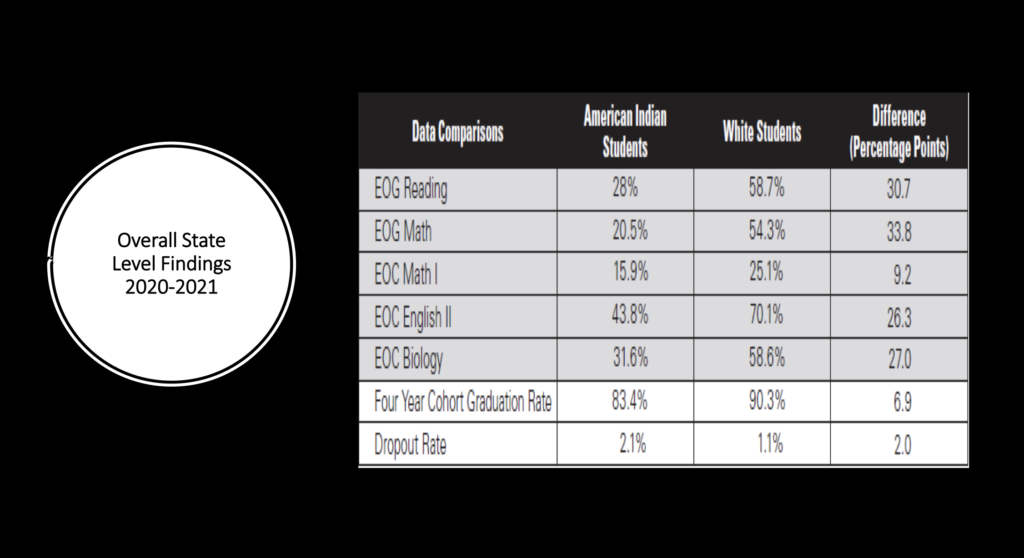
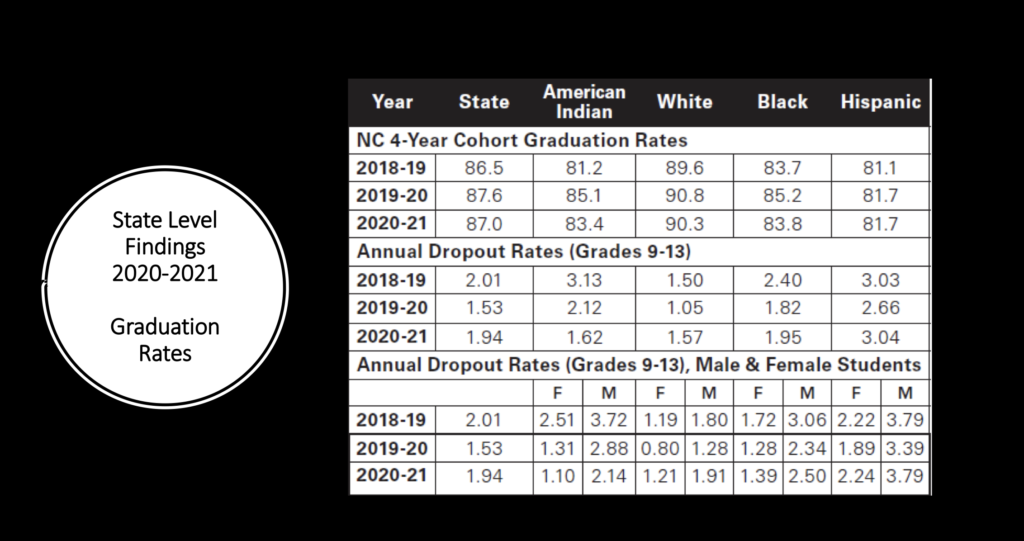
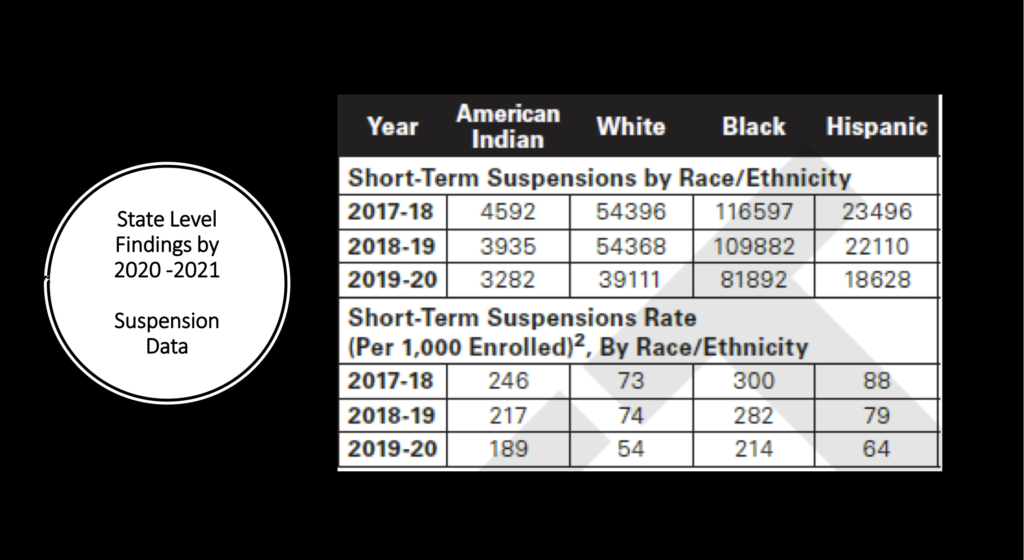
The report, from the State Advisory Council on American Indian Education, also talked about Indigenous-themed sports mascots at K-12 schools in North Carolina. The report found that 34 schools in the state still have such mascots. The Advisory Council called on DPI to work with local districts to, among other things, implement policies related to Indigenous-themed mascots and educate district staff about the harmful impacts of “inappropriate” Indigenous imagery.
In addition, the organization is calling on the Board to take specific actions to combat such imagery as well.
“Given the State Board of Education’s commitment to the well-being of American Indian students, to eliminating opportunity gaps by 2025, and to making schools and educators more culturally relevant and equity-focused, it is important for the State Board to reaffirm its opposition to American Indian mascots, nicknames, and logos, particularly those that employ and perpetuate offensive stereotypes,” the report stated.
See the full presentation here.
Here is the draft report the presentation is based on from the State Advisory Council on Indian Education.
Annual charter school report
The Board heard a presentation on the annual charter school report, which includes information on charter school growth, performance, student demographics, and more. You can see the report here and the presentation here.
Child behavioral health
In a presentation from the state Department of Health and Human Services on child behavioral health, a report revealed that mental health problems have been increasing for the past decade among children, but that COVID-19 made the issue an even bigger concern.
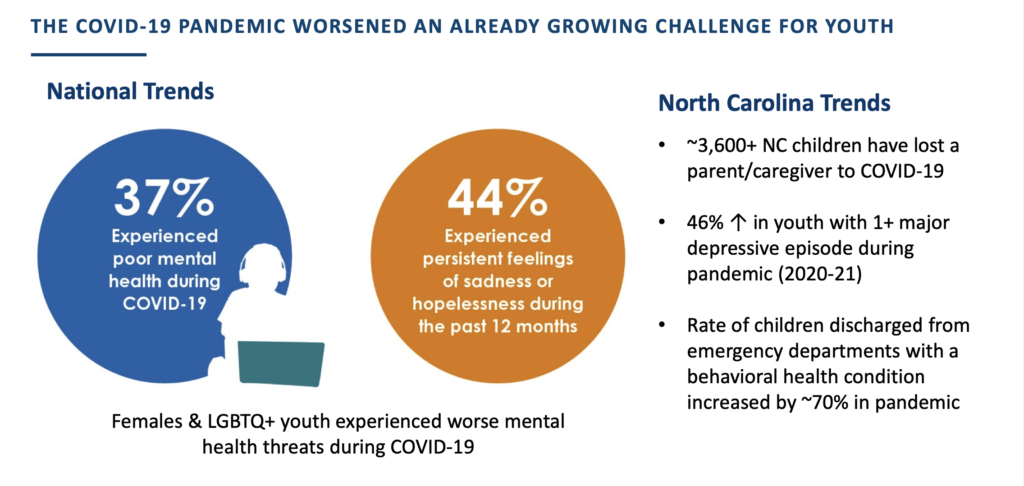
You can see the full presentation here.
New State Board of Education members
The Board also welcomed a new member this month. John Blackburn was appointed by Gov. Roy Cooper to fill the seat vacated by Todd Chasteen. Chasteen, an appointee of former Gov. Pat McCrory, a Republican, resigned in February over concerns about the direction of the Board after its passage of controversial social studies standards the previous year.
Blackburn was formerly on the Board of Trustees for Appalachian State University and served as president and general manager of Linville Resorts, Inc., according to a press release from Cooper. He was sworn in at the start of the Board’s two-day meeting.
